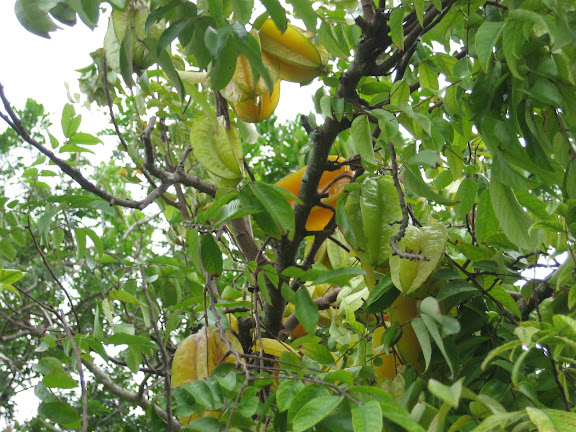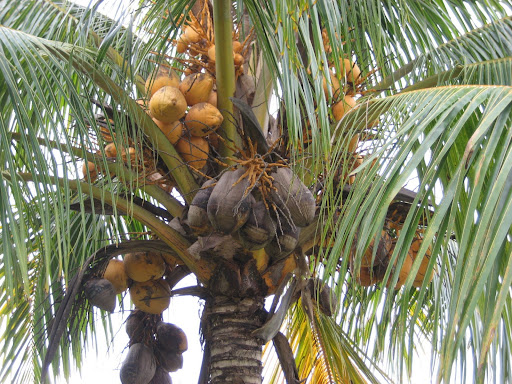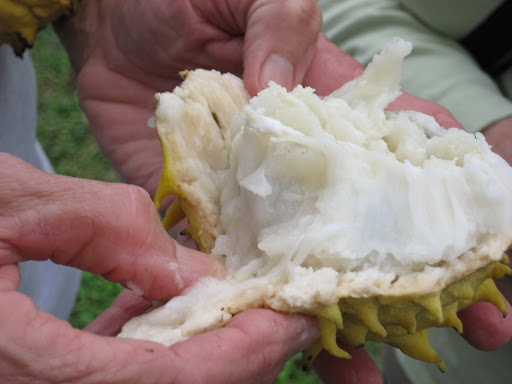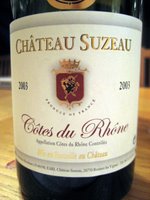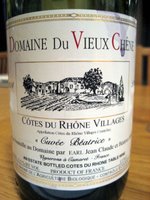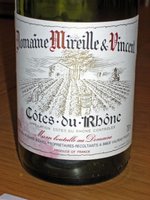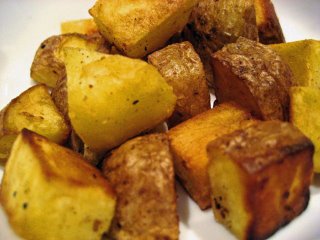This past Friday, my usually separate worlds of work and foodblogging overlapped, when I went for a site visit to a meatpacking facility in Colorado. We are doing a study of manufacturing employers who are partnering with community colleges to help Hispanic immigrant employees pursue higher education, and we found a really wonderful example of such a partnership in rural Colorado.
Part of our site visit included a tour of the facility. Going in, I will admit to being a little concerned. I'm an avowed meat eater - would seeing cows become meat turn me off of beef forever?
Judging from the roast beef sandwich I ate in the company cafeteria shortly after the tour was over, the answer would seem to be a definitive no. But it did give me a whole new level of understanding about how our meat gets to supermarket shelves, and a whole new level of respect for the people who do the sometimes brutal and always hard work of getting it there.
Note: the following includes explicit descriptions of meat processing. I don't think there's anything too icky, but I figured a warning was in order.
The first thing you notice upon getting out of the car in the parking lot is the smell. It was earthy and organic, but also unpleasant and pervasive. Fortunately, most of the plant doesn't smell that way. The smell comes from the rendering building, where meat by-products such as bones and blood and tissue are turned into things that can be sold. Thankfully, we did not tour the rendering building, because I expect the smell inside must have been truly oppressive.
We also did not see the part of the facility where the cows are slaughtered. But we did see bits and pieces of nearly everything after that. We started at the end, where boxes of meat are on shelves 10 or 20 stories high, and a robotic system pulls them off the shelves as needed to fill palletes and load them onto trucks. Then on to the boxers, packing various cuts of meat into boxes, and the packagers, loading meat into plastic bags and onto conveyer belts that lead to cryovac machines. Eventually we moved on to the meat cutting floor, where workers cut the larger cuts into smaller pieces. They used meat hooks and sharp knives (proper knife sharpening is one of the most important skills new employees need to learn) and wear chainmail gloves and a tunic to prevent injury.
It was interesting to see the larger pieces being pulled apart into muscle groups for processing. The plant has been paying attention to ergonomics, and there were various tools to reduce the physical labor required - machines that inject air into the meat to reduce the physical effort required to pull apart the muscle groups, for instance. But make no mistake - this is hard, hard work. Our guide said that there are no easy jobs in the company - just ones that are hard and a little less hard.
The further we moved into the plant, the larger the cuts got. We walked through an entire room of sides of cattle, hanging and waiting for their turn to be cut into steaks and roasts. We got to see the USDA graders and inspectors assessing each side of beef and giving it a grade of Prime, Choice or Select (based on the amount of marbeling) and a number from 1 to 5 based on the thickness of the exterior fat. The graders work side by side with a computerized camera that is capable of doing the same grading task, but which is not yet approved for exclusive use by the US government.
Our guide talked about the techniques that they use to track individual cows through the plant, so that they can track them down in case of a recall or other issue. The plant was an interesting mix of old and new technology - there was one spot where we could see all of the conveyor belts going over and under one another across the whole floor, and it was pretty amazing to see. But at the same time, they use really sophisticated computer tracking equipment to track each piece of meat.
Eventually we entered the "kill floor." This is the name for the entire section before the cows become sides of beef, not just the part where they are slaughtered (which we did not see). But it was the part of the plant where the connection of cow to meat is indisputable. And as difficult as it must be to spend your entire work day cutting meat, I can't imagine being the person whose job it is to stand on a moving conveyor belt, gut the cow, and pull out its internal organs, with stomach and small intestines and other organs all piling up around your feet. And then do another one. That's an image that's going to stay with me for a long time.
Further on in the kill floor section, we saw our first significant amount of blood, as cows that have recently been killed hung head down, with blood still dripping as they are washed and then stripped of their hides, heads and hooves. Our group made it through this section (the last thing we saw) without incident, but our guide reported that in a previous tour of cattle ranchers, one of the ranchers nearly fainted.
This is a very large scale processing plant. They process over 4,000 cows every day. These cows show up as some of the best known brands of meat in your supermarket. I rarely buy supermarket meat, preferring to go to a local butcher who gets meat that has been naturally and sustainably raised. I'll continue to do that, but my confidence in the safety (if not taste or quality) of mass market beef was definitely bolstered by my trip to the processing plant. There are numerous safeguards in place All the cows have their teeth inspected, and those over 18 months are pulled out for special processing (cows under 18 months are not susceptible to mad cow disease). USDA inspectors examine the glands of each cow, checking for any abnormality. After being stripped of their hides, the cows are put through a very high-tech piece of equipment where cameras and computers detect the presence of any "vegetable" (aka fecal) matter on the cow, and those that have it are pulled out for additional cleaning.
As I've said already, the work is difficult, even brutal. I can't imagine holding any of these jobs, which pay between $11 and $16 an hour. But nearly every person we saw on the line took the time to turn to look at us and smile. The company does everything they can to make these jobs more tolerable and to support their employees, including offering the really exciting workplace education program we were there to investigate. Many of the employees we'd talked to had been working at the plant for 10 years or more, and they were all really enthusiastic about the opportunity the job presented for them - not only to make a living wage for their families, but also to learn English (85% of the employees are Hispanic), get their GEDs, or go to college.
All in all, it was a really fascinating experience, and I'm really pleased to have had the opportunity.


















